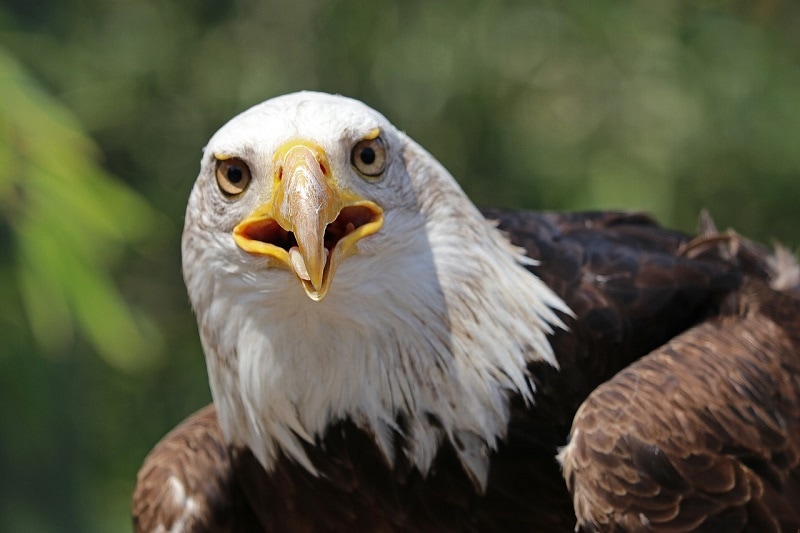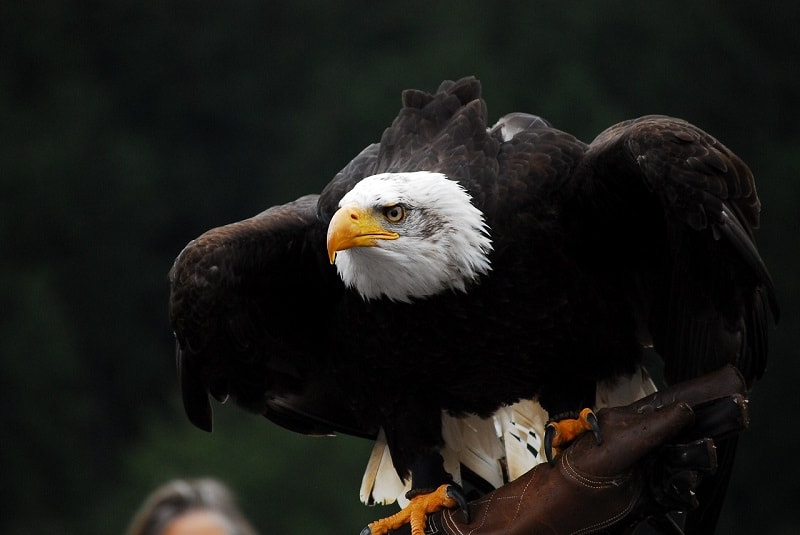2 Types of Bald Eagle: What’s the Difference? (With Pictures)
Last Updated on

Here’s a fun fact: Did you know the ‘bald’ in ‘bald eagle’ is actually an old English word ‘balde,’ that means white? So, if you thought this type of bird had no hair on its head, you’re way off tangent.
Right out of the gates, we’re just going to say even though we’ve been told numerous times that we have two different subspecies of bald eagles, they’re actually not all that different. In fact, they’re only referred to as “northern” or “southern” because they’ve populated regions that are on different latitudes.
The northern bald eagles have populated the north side of the 40-degree latitude, while their southern counterparts are on the south side of the same latitude. Why do they have morphological differences? To explain that, you’ll first have to read about the Bergman and Allen’s rule. According to this rule, most northern animals often appear larger and heavier than their southern peers. Their physiological differences are the result of different climates.
That being said, both these species share the same history, most physical attributes, feeding habits, and protection status.

The History of The Bald Eagle
The bald eagle is not as common as it used to be in the 18th and 19th century. Back in the day, you could definitely tell they existed in abundance, especially across North America. No one ever thought there would come a time when they would face extinction, so it’s safe to say we were all surprised when we were told there were only about 400 nesting pairs remaining by the 60s.

Now that we think of it, if we had to choose only one thing that significantly contributed to their population decline, we would say it’s the chemical DDT. Even though this chemical was meant to help get rid of infectious agents causing harm to the human population, it somehow found its way into the eagle ecosystem.
As a result, the eggs that were being laid by the birds during that period were so fragile that they couldn’t withstand the weight of the female bald eagle. Something had to be done, so in 1972, the government decided to ban the use of DDT.
Is the bald eagle still endangered? Nope. The stringent measures put in place by American and Canadian governments were so effective that in 1995, this species was down listed from the endangered species list to the threatened bird species list. A decade later, it was completely removed from all the lists.
We honestly cannot give you an accurate count of their population today, but we’re certain they’re more than 100,000. They are concentrated in North America, and most biologists think that’s because it’s easier for them to hunt salmon that have populated the waters in that region.
Description
The bald eagle is a bird of prey. So, by its very nature, it’s a pretty large bird. On average, it measures 36 inches in length, but you’ll notice the females are typically larger compared to the males. A mature male will only weigh 9 pounds or less, whereas the females average about 13 pounds.
When they spread their wings, you’ll get a measurement of 6 to 7½ feet. Just to put things into perspective, that’s more than the average height of a basketball player. The only other bird that we could think of, that’s larger than the bald eagle and a resident in North America, is the golden eagle.
You’ll also be interested to know that the bald eagle is not actually black and white. That’s just a misconception. If you closely look at the plumage of a mature bald eagle, it’s dark brown. But yes, the bill and feet are both yellow, and the tail and head white.

Habits
Being a bird of prey, it loves hunting small mammals. But that’s only if it can’t find fish, which is their main diet. Also, if you’re organizing a cookout, and you leave your steak lying around without any supervision, it will steal it for sure. You won’t even notice it’s nearby because they way its eyes are structured, they can spot a prey that’s almost 2 miles away.
Most birds of prey do mate for life. They’re all monogamous in nature, and when they start building nests, they’ll make sure they’re very high off the ground and really large. How large? Well, in the case of the bald eagle, its nest will most likely be more than 12 feet deep and approximately 8 feet wide. It will use sticks as the building material, so you know that the whole structure will probably weigh more than a ton.
A mature bald eagle will be four or five years old, and the female can only lay up to three eggs a year. During the incubation period—that is four to six weeks—the male hunts and feeds the female. And while the female eats, the male takes over the incubating duties.
A bald eaglet will add about a pound every five days, and they normally grow up so fast. It only takes 12 weeks for them to grow to the same size as their parents, but that doesn’t mean that they’ll be ready to leave the nest. The adults won’t leave either, until after their little ones learn how to fly and hunt without help.

Frequently Asked Questions
How long will the eaglets stay in the nest?
Both the northern and southern eaglets fledge after 10 to 12 weeks. It’s actually a gradual process, so you won’t see them leave the nest the minute they realize that they know how to fly. They’ll play around on the tree’s branches for a couple of days, and then test the waters. But you’ll still see them return to the same nest a few times before they leave for good. That’s probably after a month or two.

Which bald eagle needs more range?
We would say the northern bald eagle needs more range due to the weather patterns in the north. Winter is usually not their favorite time of the year, since the cold affects their hunting and feeding habits. But in general, bald eagles rarely search for new habitats. Other than the weather changes, they’ll only move if they lose their habitats through human intervention.
Are the feeding and breeding patterns similar?
Obviously not. You’ll never find a northern bald eagle laying eggs in, say January, when the temperatures are below zero, but that’s a normal mating period for the southern bald eagle. And the same applies to their feeding patterns. A northern bald eagle will only try to hunt small mammals during winter because most lakes are frozen during that time of the year.

In Conclusion
If you’ve been wondering who’s been stealing your chickens, there’s a chance you probably now know. Both northern and southern bald eagles are bold predators, and that’s a good thing because ‘bold’ is exactly the type of trait that you’d want to see in a bird that represents an entire nation.
If you liked this article, check out some of our other top-trending birding posts:
- 7 Common Yellow Birds: Pictures, Info, Nesting Behaviors & Protection Status
- 3 Proven Ways to Keep Sparrows Out of Bluebird Houses
- 2 Species of Eagles in Texas (with Pictures)
Featured Image Credit: herbert2512, Pixabay
About the Author Robert Sparks
Robert’s obsession with all things optical started early in life, when his optician father would bring home prototypes for Robert to play with. Nowadays, Robert is dedicated to helping others find the right optics for their needs. His hobbies include astronomy, astrophysics, and model building. Originally from Newark, NJ, he resides in Santa Fe, New Mexico, where the nighttime skies are filled with glittering stars.
Related Articles:
Monocular vs Telescope: Differences Explained (With Pictures)
How to Clean a Refractor Telescope: Step-by-Step Guide
How to Clean a Telescope Eyepiece: Step-by-Step Guide
How to Clean a Rifle Scope: 8 Expert Tips
What Is a Monocular Used For? 8 Common Functions
How to Clean a Telescope Mirror: 8 Expert Tips
Brightfield vs Phase Contrast Microscopy: The Differences Explained
SkyCamHD Drone Review: Pros, Cons, FAQ, & Verdict
